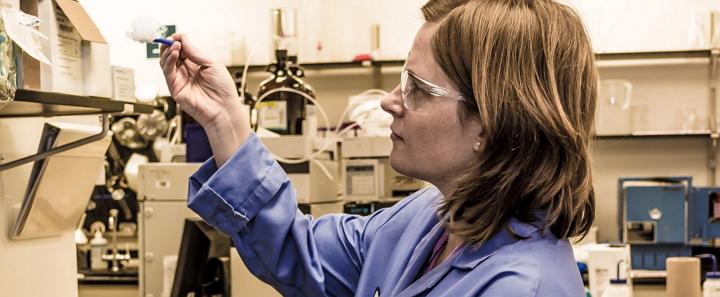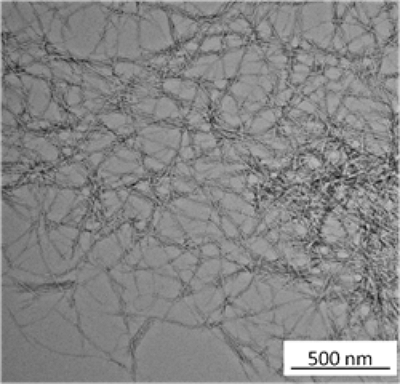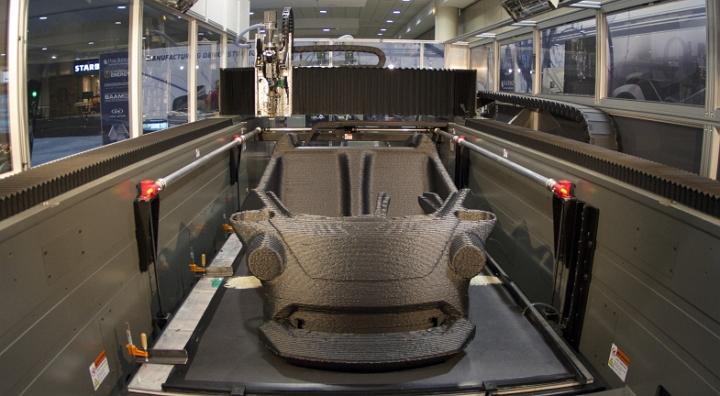 Materials scientists from the renewable biomaterials industry and government researchers are hard at work on a project to move industrial adaptation of 3D printing forward. They are doing this by improving the mechanical strength of 3D printing resins, using ultra-strong nanoparticles extracted from trees.
Materials scientists from the renewable biomaterials industry and government researchers are hard at work on a project to move industrial adaptation of 3D printing forward. They are doing this by improving the mechanical strength of 3D printing resins, using ultra-strong nanoparticles extracted from trees.
 Nanocellulose materials offer the promise of becoming an economical substitute for expensive carbon fibers which are now used to 3D print load bearing parts, and American Process Inc. in Atlanta, GA, has partnered up with Oak Ridge National Laboratory for a joint agreement to improve the strength of 3D printing plastic resins using this breakthrough formulation.
Nanocellulose materials offer the promise of becoming an economical substitute for expensive carbon fibers which are now used to 3D print load bearing parts, and American Process Inc. in Atlanta, GA, has partnered up with Oak Ridge National Laboratory for a joint agreement to improve the strength of 3D printing plastic resins using this breakthrough formulation.
The nanocellulose, a bio-derived nanomaterial, is expected to be of particular interest to the automotive and mold manufacturing industries, and the researchers say they’ve arrived at materials which have strengths similar to aluminum – and that are made at a competitive cost to traditional materials.
While carbon fibers have been used as a reinforcing material for 3D printing resins, high cost and the dependency of the fibers on petroleum led researchers at ORNL to research more economical alternatives.
 Theodora Retsina, the CEO of American Process Inc., says nanocellulose can boost the performance of plastics in an environmentally friendly – and market competitive – way. She says it promises significant advantages over carbon fiber.
Theodora Retsina, the CEO of American Process Inc., says nanocellulose can boost the performance of plastics in an environmentally friendly – and market competitive – way. She says it promises significant advantages over carbon fiber.
“Carbon fibers are extremely strong and lightweight but expensive to produce and used only in the highest end applications such as aerospace and luxury vehicles. Nanocellulose is as strong as carbon fiber and are lower weight,” Retsina says.
The material is already in production and API calls it BioPlus. The product is a suite of nanocellulose materials made at the company’s plant in Thomaston, Georgia.
“With our manufacturing breakthrough, nanocellulose is significantly more cost competitive than carbon fibers,” Retsina added. “We didn’t invent nanocellulose; we made it less expensive, thermally stable at high temperatures, and gave it functionality to blend with hydrophobic polymers – thereby enabling market applications and opening the road to commercial production.”
Retsina says the material produced at the Georgia plant will be used by ORNL to 3D print a large scale component using the “Big Area Additive Manufacturing” (BAAM) 3D printing machine.
At some 500 to 1000 times faster than most large scale printers, the prototype BAAM machine was developed by ORNL in partnership with Cincinnati Incorporated. The enormous printer is based on Cincinnati’s commercial laser cutting technology and uses a gantry-style platform from that machine.
ORNL has also installed the largest version of the 3D BAAM printer in the world, and it’s capable of printing objects up to 20 feet long, 8 feet wide and 6 feet tall.
“We are excited about the opportunity to work with American Process Inc. to develop nanocellulose reinforced polymers with the objective of achieving a completely bio-derived, new structural material for additive manufacturing,” says Craig Blue, the Director of the Advanced Manufacturing Program and Manufacturing Demonstration Facility at ORNL.
The research was supported by the Advanced Manufacturing Office within the Department of Energy.
Can you envision applications for this engineered biomaterial? What kind of objects would you build if you had access to a plastic material that was both cheaper, and every bit as strong, as carbon fiber? Let us know in the Nanocellulose forum thread on 3DPB.com.
Subscribe to Our Email Newsletter
Stay up-to-date on all the latest news from the 3D printing industry and receive information and offers from third party vendors.
Print Services
Upload your 3D Models and get them printed quickly and efficiently.
You May Also Like
Nikon SLM Solutions Sells SLM 500 to Primary Weapon Systems to Expand Suppressor Production
Primary Weapons Systems (PWS) is a Boise, Idaho-based manufacturer of suppressors, firearms, and related components. A subsidiary of Vigilant Gear and a sister company to aftermarket Glock slide manufacturer Lone...
3DPOD 261: Tooling and Cooling for AM with Jason Murphy, NXC MFG
Jason Murphy´s NXC MFG (Next Chapter Manufacturing) is not a generalist service; instead, the company specializes in making tooling. Using LPBF and binder jet, the company produces some of the...
HP and Firestorm Labs Form Partnership to Use Multi Jet Fusion 3D Printers in Deployable Factories
HP Inc., maker of a range of additive manufacturing (AM) solutions including the Multi Jet Fusion (MJF) ecosystem, has announced a partnership with Firestorm Labs, a developer of containerized, deployable...
3D Printing News Briefs, July 2, 2025: Copper Alloys, Defense Manufacturing, & More
We’re starting off with metals in today’s 3D Printing News Briefs, as Farsoon has unveiled a large-scale AM solution for copper alloys, and Meltio used its wire-laser metal solution to...

































